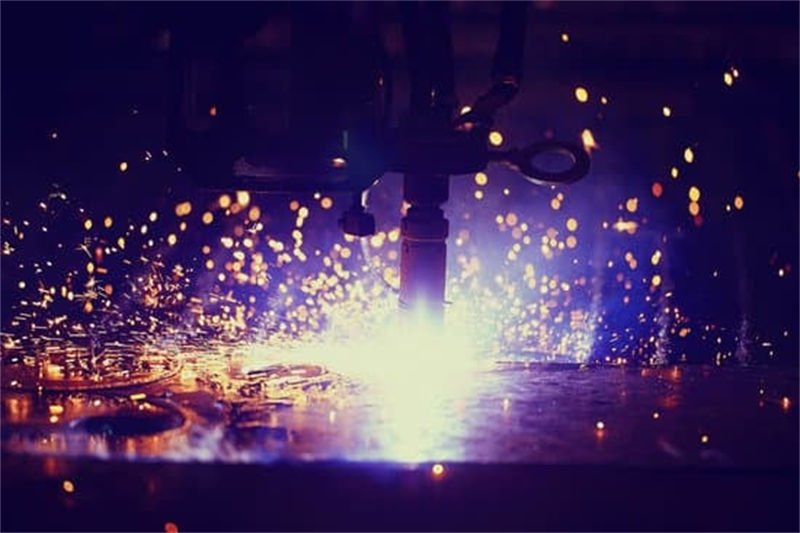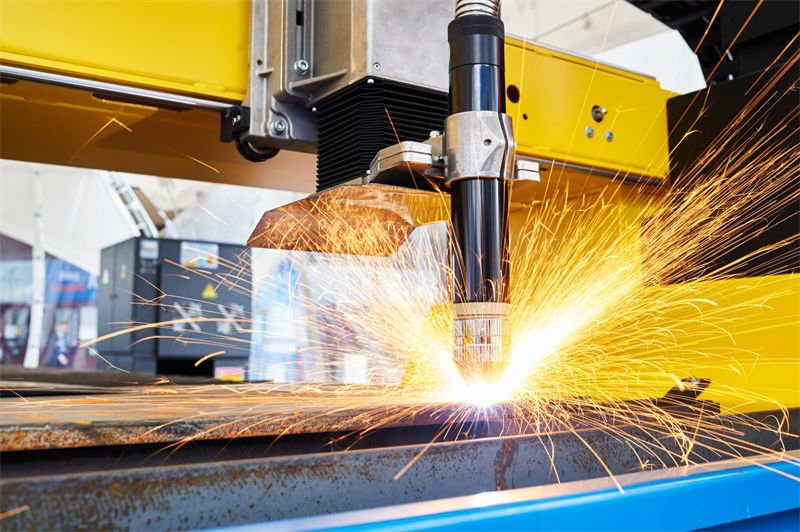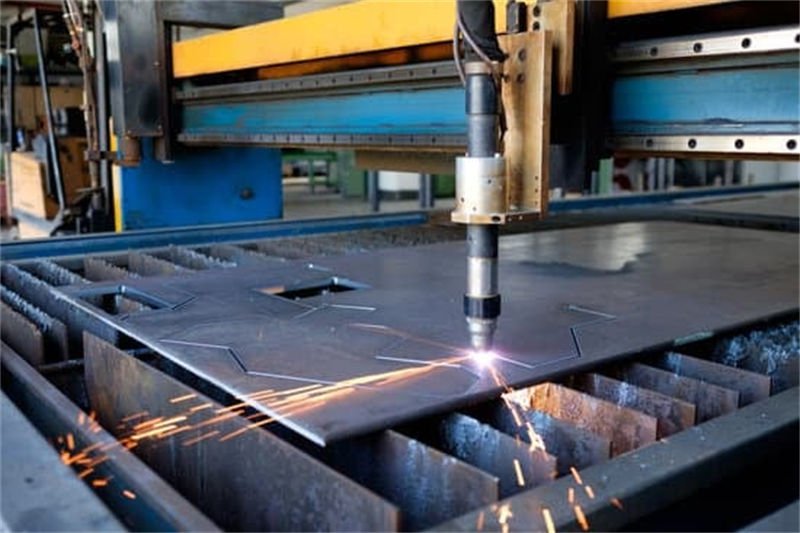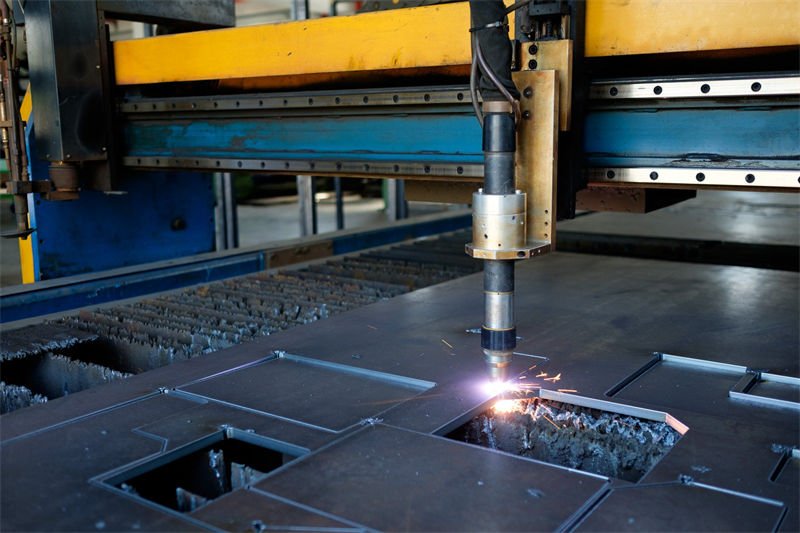
Choosing a plasma cutter feels daunting? Let’s simplify it together!
To choose the best plasma cutter, I focus on material type and thickness, amperage capacity, power source compatibility, and advanced features like pilot arc technology. Balancing these with my budget ensures I find a cutter that meets my needs efficiently.
I remember the first time I needed a plasma cutter—it was a mix of excitement and confusion. The sheer variety of models and features made my head spin. But breaking it down helped. By considering what materials I’d be working with, their thickness, and the available power sources, I began to see a clearer path. Advanced features like pilot arc technology became non-negotiable once I understood their benefits in handling tricky surfaces. Diving deeper into each factor ensured I made a choice that was just right for me, turning a daunting task into an empowering decision.
Amperage capacity affects cutting speed and thickness.True
Higher amperage allows for faster cutting and thicker materials.
Pilot arc technology is essential for all plasma cutters.False
Pilot arc is beneficial but not necessary for all cutting tasks.
How Does Material Type Influence Your Plasma Cutter Choice?
Choosing the right plasma cutter is like finding the perfect pair of shoes—you have to consider the fit for your materials and needs.
The type of material you’re cutting influences the plasma cutter’s amperage, speed, and efficiency. Conductive metals such as steel require higher amperage, while aluminum needs specialized cutters. It’s crucial to consider both material thickness and conductivity for optimal results.

Understanding Material Conductivity
I remember the first time I had to cut through a piece of steel—it was like trying to slice through a loaf of bread with a butter knife. That’s when I realized the importance of matching the plasma cutter to the material. Conductive metals like steel and copper1 need more juice, meaning higher amperage, to cut efficiently. On the flip side, cutting aluminum presents its own set of challenges because of its lower melting point.
Material Thickness and Amperage
Picture this: you’re trying to cut a thick steak with a dull knife. Not gonna happen, right? That’s why amperage is key when dealing with varying material thicknesses. For instance, a 30A plasma cutter is perfect for thin materials, but if you’re tackling something thicker, you’ll want a machine that can crank up to 60-100A. The rule of thumb here is pretty straightforward: 1 amp lets you cut about 1/32 inch of material.
| Material Type | Recommended Amperage | Typical Thickness Range |
|---|---|---|
| Steel | 40A-80A | Up to 25mm |
| Aluminum | 50A-100A | Up to 38mm |
| Stainless Steel | 50A-100A | Up to 25mm |
Specialized Plasma Cutters for Different Materials
Think of it like needing different knives for different kitchen tasks. Some materials, like aluminum and stainless steel, might call for a plasma cutter with features like pilot arc technology. This tech lets you cut without direct contact, which is a lifesaver on rusty or painted surfaces2. These advancements ensure not only smooth cuts but also extend the life of your consumables.
Considerations for Mixed Material Use
If your projects are as diverse as a mixed bag of candies, a versatile cutter is your best bet. Dual-voltage machines are like those Swiss Army knives—they offer flexibility, allowing you to transition between different work environments3 without switching out machines. Evaluating these factors based on your project needs will help you select a plasma cutter that boosts both efficiency and precision in your work.
Steel requires higher amperage than aluminum for cutting.True
Steel's higher conductivity demands more amperage than aluminum.
A 30A plasma cutter can cut up to 25mm thick steel.False
A 30A cutter is suitable for thin materials, not 25mm thick steel.
Why is Amperage Capacity Crucial for Efficient Cutting?
Imagine slicing through metal like butter—sounds satisfying, right?
Amperage capacity is crucial for cutting because it determines the maximum thickness a tool can handle efficiently. Higher amperage enables smoother cuts through thicker materials, ensuring precision and speed in operations.

Understanding Amperage Capacity in Cutting Tools
When I first started diving into the world of cutting tools, the whole concept of amperage felt like a distant techy term. But it turns out, understanding amperage is like knowing the secret ingredient in your grandma’s famous pie—it’s what makes everything work smoothly. Imagine you’re about to tackle a thick piece of metal; having a tool with a higher amperage capacity, say 60 amps, means you’re equipped to handle it effortlessly, unlike a 30-amp tool that might struggle or take longer. This makes amperage a critical factor4 when deciding which tool will be your trusty sidekick.
The Science Behind Amperage and Cutting Efficiency
Back when I was experimenting with different tools in my garage, I learned that higher amperage isn’t just about cutting thicker stuff. It’s also about how quickly and neatly you can make those cuts. A well-calibrated tool operating at its optimal amperage can significantly reduce wastage and save time—something crucial when you’re on a tight schedule or budget.
| Amperage (A) | Max Cutting Thickness (mm) | Application |
|---|---|---|
| 30 | Up to 10 | Light-duty tasks |
| 60 | Up to 20 | Medium industrial use |
| 100 | Over 25 | Heavy-duty applications |
Practical Applications of Amperage Capacity
Picture this: Ferudun, a laser equipment technician in Istanbul, faces the daily challenge of picking the right machines for diverse customer needs. Whether he’s dealing with heavy-duty industrial projects or lighter tasks, choosing the right tool with suitable amperage is essential for delivering top-notch results. It’s a balancing act between maximizing efficiency and keeping costs down.
Making Informed Decisions Based on Amperage
Understanding the nuances of amperage impacts how I approach buying new tools. Knowing the typical and maximum material thickness I’ll deal with helps me select tools that match my projects’ demands precisely, boosting productivity and ensuring that every cut is as clean as it can be.
Considerations Beyond Amperage
While amperage is important, other features can make or break your tool’s effectiveness. Consider factors like power source compatibility and portability—important for someone like Terasa in the US, who needs machines that can adapt to various work environments. Additional features like pilot arc technology can also significantly enhance your tool’s performance, especially when working with tricky surfaces.
Higher amperage allows cutting thicker materials.True
Higher amperage provides more power, enabling the tool to cut through thicker materials efficiently.
Amperage capacity is irrelevant to cutting speed.False
Amperage directly impacts cutting speed; higher amperage usually results in faster cuts.
How Does the Power Source Affect Plasma Cutter Performance?
Ever wonder why your plasma cutter doesn’t quite hit the mark sometimes? The secret might just lie in the power source. Let’s dive into how choosing the right voltage can transform your cutting experience.
The power source plays a crucial role in plasma cutter performance by affecting cutting capacity, speed, and efficiency. Whether you opt for 120V, 240V, or dual-voltage options determines your machine’s versatility and power for different tasks.

Understanding Voltage Options
You know how sometimes you need just the right tool for a job? Well, the power source of a plasma cutter is like that—it’s the unsung hero behind every smooth cut. I remember when I first started dabbling in metalwork; I had this trusty 120V cutter in my garage. Perfect for my weekend projects, it was like a reliable friend, never failing me when I worked on thinner metals. However, when I ventured into thicker materials, I quickly realized its limitations.
-
120V: This is your go-to for light-duty work environments5, kind of like using a small brush for fine details. Perfect for home workshops where you’re mostly dealing with thinner stuff.
-
240V: If you’re stepping up your game—maybe working in a professional setting—this is what you want. It’s like switching from a scooter to a motorcycle; more power means tackling those thicker metals without breaking a sweat.
-
Dual-Voltage: Think of this as your Swiss Army knife—versatile and ready for anything. Switching between 120V and 240V means you’re prepared for any situation that comes your way.
Impact on Cutting Capacity
Back when I upgraded to a 240V machine, it felt like I’d unlocked a new level in a video game. Suddenly, those tougher projects weren’t so intimidating anymore. The voltage you choose affects the amperage—and that’s what decides how thick of a material you can handle.
Here’s a simplified table showing how different amperage levels relate to material thickness:
| Amperage | Material Thickness | Example Use |
|---|---|---|
| 30A | Up to 1/4 inch | Sheet metal cutting |
| 60A | Up to 3/4 inch | Fabrication tasks |
| 100A | Over 1 inch | Heavy-duty applications |
Influence on Cutting Speed and Efficiency
There’s nothing like the rush of completing a project faster than you thought possible. A higher voltage machine can be like turbocharging your plasma cutter. With more power, you get quicker speeds, which means more productivity—especially crucial if you’re on a tight schedule.
Moreover, faster cutting speeds6 boost productivity significantly in industrial environments. A dual-voltage cutter used at 240V will perform significantly faster than at 120V, enhancing work efficiency and reducing operational time.
And let’s not forget about reliability. A stable power source ensures your cutter performs consistently, which is key when you’re trying to nail those precise cuts.
Considerations for Portability and Fieldwork
I’ve had my fair share of on-site gigs where the available power was as unpredictable as the weather. That’s when a dual-voltage machine feels like a lifesaver, offering flexibility that keeps you in the game even with limited power sources.
While higher voltages provide better performance, they also require more robust electrical setups. For fieldwork or locations with inconsistent power supplies, understanding how your plasma cutter’s power source impacts performance can guide you in selecting the best option for your needs.
So whether you’re eyeing that sleek lightweight model for its portability or drooling over the powerful 240V beast for its sheer cutting prowess, knowing how your plasma cutter’s power source affects performance is crucial. It’s all about matching your tools to your needs—because when they align just right, that’s when the magic happens.
240V plasma cutters handle thicker materials better than 120V.True
240V provides higher amperage, enabling efficient cutting of thicker materials.
Dual-voltage plasma cutters are less efficient at 240V than 120V.False
Dual-voltage cutters perform faster and more efficiently at 240V.
How Do Advanced Features Enhance Plasma Cutter Functionality?
Let me take you on a journey through the world of plasma cutters, where advanced features transform challenges into opportunities.
Advanced features in plasma cutters, like pilot arc technology and CNC compatibility, significantly enhance functionality. They enable precise cutting on rough surfaces, improve automation, and extend consumable life, optimizing the cutting process.

Pilot Arc Technology: Cutting Through Challenges
When I first started working with plasma cutters, dealing with painted or rusty surfaces was a bit like wrestling with a stubborn jar lid—it was frustrating and time-consuming. That’s where pilot arc technology stepped in like a trusty sidekick. It allows the cutter to ignite without making direct contact with the metal, meaning I could slice through those challenging surfaces without having to scrub them clean first. This not only saved me a ton of time but also ensured that every cut was as crisp as freshly ironed pants.
Pilot arc technology allows plasma cutters to ignite without direct contact with the metal surface. This feature is particularly useful when working with painted or rusty materials7, ensuring a cleaner cut and reducing the need for pre-cleaning. This not only saves time but also enhances the quality of the cut.
CNC Compatibility for Automation
Imagine having a tool that operates with the precision of a watchmaker yet has the endurance of a marathon runner—that’s what CNC compatibility brings to plasma cutters. Back in the day, crafting complex shapes felt like solving a puzzle with missing pieces. Now, thanks to CNC systems, I can automate intricate cuts with the consistency of a Swiss clock. It reduces human error and boosts productivity, making it an invaluable feature for anyone in mass production.
CNC (Computer Numerical Control) compatibility in plasma cutters transforms them into automated powerhouses. This feature allows for precision cutting on a variety of complex shapes8, perfect for industrial applications. CNC systems enhance consistency, reduce human error, and increase productivity, making them indispensable for mass production.
Adjustable Post-Flow: Extending Consumable Life
There’s nothing more satisfying than finding ways to stretch your dollar further, right? The adjustable post-flow feature in plasma cutters is my secret weapon for doing just that. It regulates the cooling air post-cutting, which helps prolong the life of the torch and consumables—kind of like finding out your favorite pair of jeans are actually on sale.
The adjustable post-flow feature regulates the cooling air that flows after cutting. By controlling this flow, users can prolong torch life and improve consumable longevity9. This is crucial for maintaining efficiency and reducing operational costs in high-volume settings.
Built-in Compressors: Simplifying Setup
Picture this: you’re out in the field, ready to work, but you’re weighed down by cumbersome equipment. That’s where built-in compressors come to the rescue. By eliminating the need for external air supplies, these plasma cutters become as portable as a toolkit on wheels. This means setup is a breeze, and I can focus on what really matters—getting the job done efficiently.
Plasma cutters with built-in compressors eliminate the need for external air supplies, making them more portable and easier to set up. This is particularly advantageous for fieldwork where mobility and ease of setup10 are critical. It streamlines operations, allowing workers to focus on cutting rather than equipment logistics.
| Feature | Benefit |
|---|---|
| Pilot Arc Technology | Cuts through painted/rusty surfaces without pre-cleaning |
| CNC Compatibility | Enables automated, precise cutting on complex shapes |
| Adjustable Post-Flow | Prolongs torch life; reduces consumable costs |
| Built-in Compressors | Enhances portability; simplifies field operations |
Understanding these advanced features has been like finding the right keys to unlock the full potential of my plasma cutter. By selecting features that align with my needs, I can ensure every cut is not just functional but a work of art.
Pilot arc technology reduces pre-cleaning time.True
Pilot arc ignites without contact, cutting through rusty surfaces.
CNC compatibility decreases cutting precision.False
CNC systems enhance precision by automating complex shape cuts.
Conclusion
Choosing the best plasma cutter involves considering material type, thickness, amperage capacity, power source compatibility, and advanced features like pilot arc technology to meet specific cutting needs efficiently.
-
Learn which metals are most conducive to efficient plasma cutting and why they require specific amperage settings. ↩
-
Discover how pilot arc technology aids in cutting through challenging surfaces like rusty or painted metals. ↩
-
Explore dual-voltage plasma cutters that adapt to varying power conditions, ideal for diverse work settings. ↩
-
Explores why amperage is critical for efficient tool performance and how it influences material handling capabilities. ↩
-
Explore light-duty plasma cutters that are ideal for home workshops to enhance your DIY projects efficiently. ↩
-
Learn how faster cutting speeds can improve productivity and efficiency in plasma cutting operations. ↩
-
Explore how pilot arc technology allows cutting through painted or rusty surfaces effectively. ↩
-
Learn about the benefits of CNC systems for precision and automation in cutting. ↩
-
Understand how adjustable post-flow can extend consumable life and reduce costs. ↩
-
Discover how built-in compressors improve portability and ease setup in fieldwork. ↩



